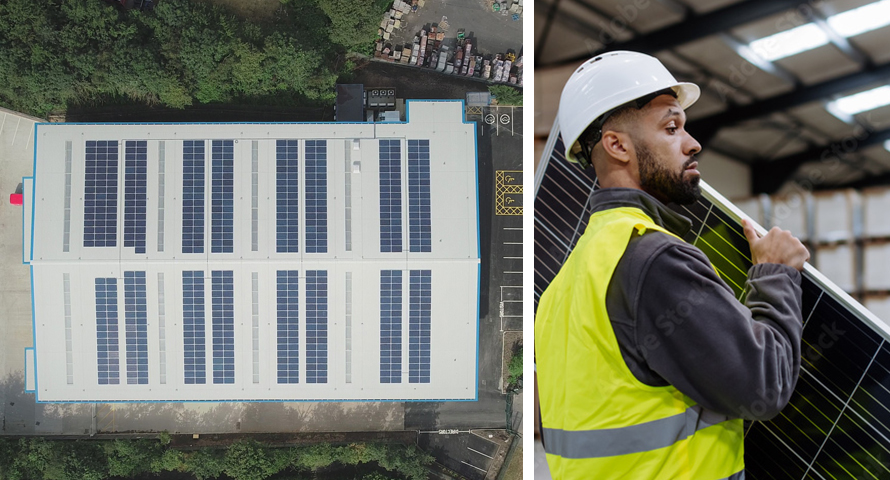- 01535 652338
- mail@watsonsbs.com

The Path to Net Zero: Regulate, Recycle & Renew
The journey to achieve net zero emissions is a crucial and challenging task that requires cooperation from individuals, businesses, and governments. This involves shifting towards sustainable practices like using renewable energy, improving energy efficiency, and developing new technologies.
In the UK, the commercial built environment contributes about 25% of total carbon emissions. Around 19% of these emissions come from daily operations such as power and heating generated from fossil fuels, while the remaining 6% comes from the initial construction of buildings. This highlights the need for every building project, whether it's a retrofit or new construction, to focus on a fully sustainable approach.
At Watsons, our strategy aims to make our builds environmentally friendly by focusing on three key areas: regulation, recycling, and renewables. Our approach to all mechanical and electrical (M+E) services emphasises energy efficiency, renewable energy sources, water conservation, responsible material choices, waste reduction, adherence to green standards, and the integration of smart technologies.

Key climate change mitigation statistics, from UKGBC
Regulation
The UK has strict regulations to promote low carbon emissions in construction, built around the UK government’s Net Zero Strategy, a document focused on achieving net zero emissions by 2050. These standards require energy-efficient designs, the use of renewable technologies, and the phase-out of fossil fuel boilers. Watsons keeps up to date with all regulations to ensure our projects meet the latest codes.
While these regulations lay a strong foundation for a zero-carbon approach, it is widely accepted that there are flaws in the regulatory strategy. Chiefly among them is the lack of measures focused on retrofitting existing buildings, which is concerning considering that about 80% of the buildings that will exist in 2050 are already built. This is why outdated commercial M+E systems are updated to lower carbon footprint, and why Watsons incorporates smart, efficient and sustainable solutions into every retrofit and new build.
Recycling
In smart building design, recycling resources back into the building's systems is crucial. When designing M+E and plumbing solutions, we prioritise options that allow for recycling. This can include on-site water recycling systems for processes that need a lot of water, like cooling and manufacturing, and greywater systems that treat and reuse water from sinks, showers, and laundry for non-drinking purposes like flushing toilets or irrigating landscapes.
Heat recovery systems are another way to reduce energy consumption significantly. These systems extract heat from the air being removed from the building and transfer it to the incoming fresh air, reusing the building's stored heat.
We also choose materials for our construction projects based on their low-carbon footprint. This includes using recycled building materials and sourcing locally to reduce transportation emissions.
Renewables
On-site renewable energy generation is a crucial part of any low-emissions plan. We offer technologies such as solar PV, wind, and geothermal power systems, as well as hybrid systems that combine conventional energy sources with renewables to reduce the carbon footprint.
As part of our planned preventative maintenance (PPM) services, we also consider the lifespan of components in a building's M+E system. We replace and renew components nearing the end of their lifespan to ensure efficient operation, reducing the building's carbon footprint.

Retrofitting the Smart Way
A sustainable strategy requires smart design and integration to significantly reduce a building's carbon footprint. When designing new systems or retrofits, Watsons incorporates smart, energy-efficient technologies like LED lighting, high-efficiency HVAC systems, and building management systems (BMS) that optimise energy use based on room occupancy.
As an example of our reuse and recycle approach, we recently retrofitted a new heating system for a medical centre in Bradford. The centre's two existing air-to-water air source heat pumps and the associated plant were utilised and reused. The existing distribution pipework and heat emitters were stripped out and replaced with new pipework and radiators sized with a flow temperature of 55°C, ensuring the building could be adequately heated by the low-temperature ASHP’s. In combination, these solutions provided a cost-effective method of heating a multi-story building that reduces carbon footprint.
If the path to Net Zero is going to be reached by 2050, many commercial buildings will need to be updated with sustainable energy solutions. While this may seem an expensive and daunting task for building owners, the immediate and long-term cost benefits far outweigh the initial outlay, and our team of specialists can design, plan and implement a wide range of sustainable solutions, custom-made for any commercial or industrial space.

